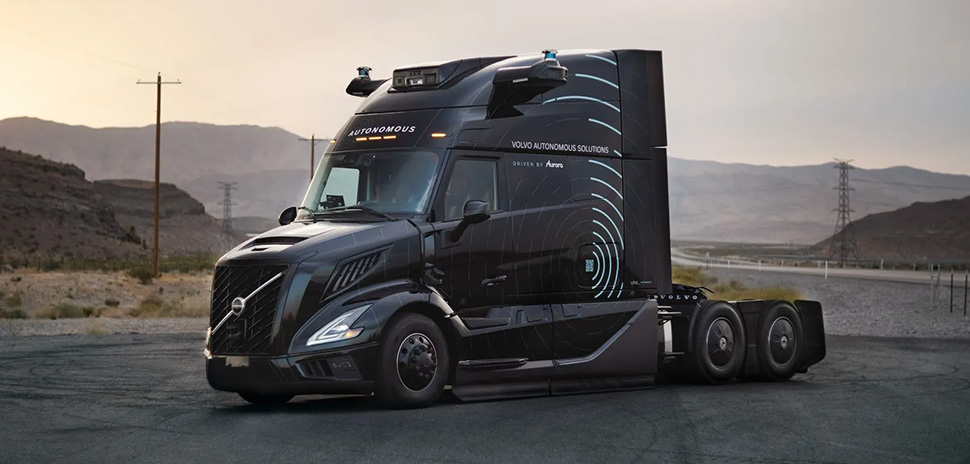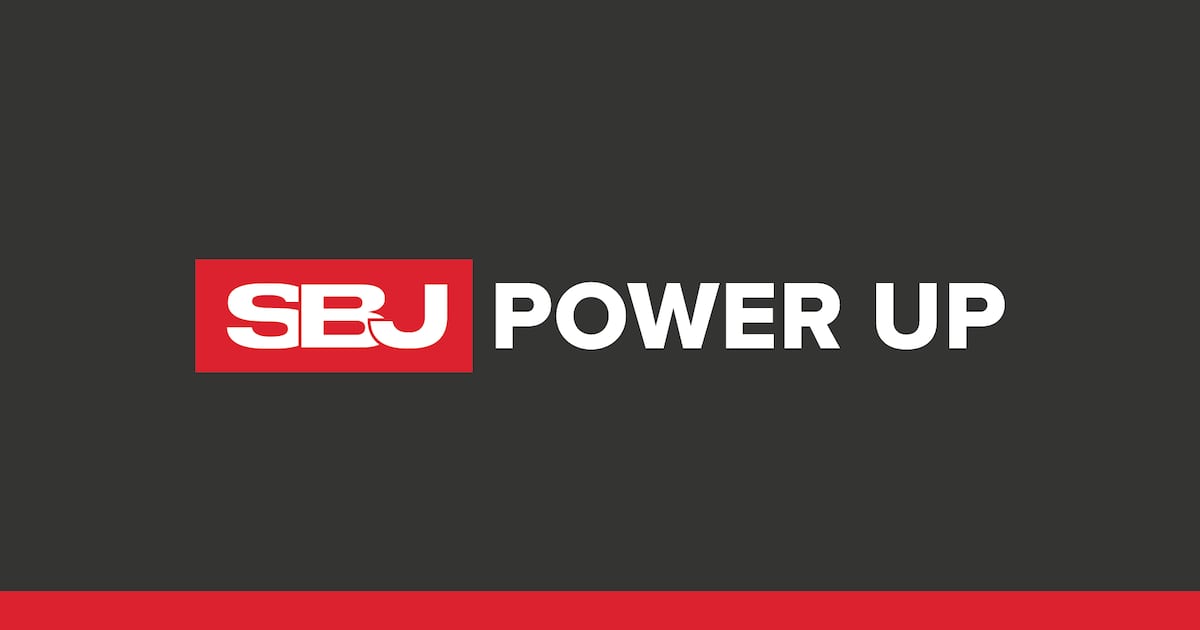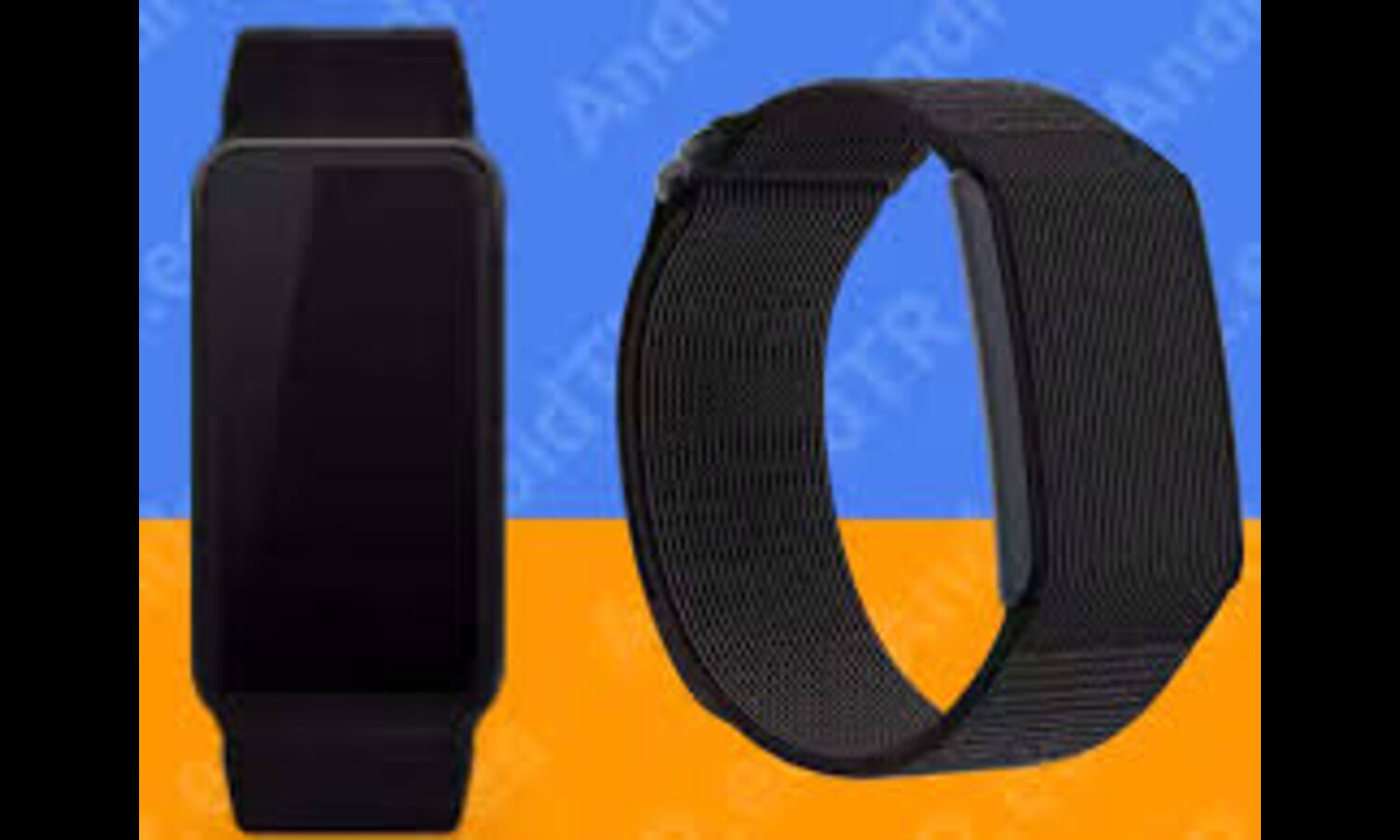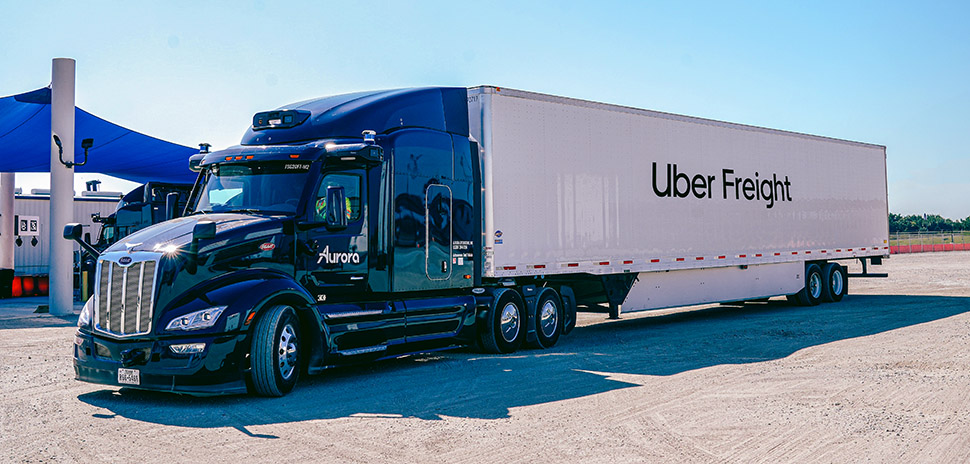Technology
North Texas Company Partners with Aurora to Launch Autonomous Vehicle Workforce Program » Dallas Innovates
Volvo VNL Autonomous truck powered by Aurora Driver self-driving technology. [Photo: Aurora Innovation] Aurora Innovation made history in April as the first in the U.S. to transport goods on a U.S. highway with self-driving 18-wheelers—and not a single human aboard. Those historic runs between Dallas and Houston on I-45 could be a harbinger of much […]


Volvo VNL Autonomous truck powered by Aurora Driver self-driving technology. [Photo: Aurora Innovation]
Aurora Innovation made history in April as the first in the U.S. to transport goods on a U.S. highway with self-driving 18-wheelers—and not a single human aboard. Those historic runs between Dallas and Houston on I-45 could be a harbinger of much more autonomous trucking to come. And now Aurora is partnering with Irving-based On the Road Garage to train workers to support the transition.
Pittsburgh, Pennsylvania-based Aurora (Nasdaq: AUR) later put observers back behind the wheel on the Dallas-Houston runs, at least temporarily, at the request of PACCAR, the manufacturer of Aurora’s Peterbilt and Kenworth trucks. But the trucking runs continue with the company’s Aurora Driver technology operating the vehicles.
Now On the Road Garage, which has two locations in Irving and Dallas, is partnering with Aurora by launching OTR Advanced Vehicle Technology—Powered by Aurora, “a cutting-edge apprenticeship and upskilling initiative designed to prepare workers from all backgrounds and experiences for high-growth careers in the autonomous vehicle (AV) industry.”

Photo: On the Road Garage
Aurora is advising the program, working with On the Road to co-create curriculum and training pathways that align with the evolving demands of various transportation industries. The training includes AV and electric vehicle repair, ADAS calibration, advanced vehicle technologies, and AV terminal operations, according to Champion Impact Capital, part of the On the Road family of businesses.
‘Creating a national model’

Michelle Corson
Champion was founded by On the Road Garage CEO Michelle Corson in 2013 to make investments in social enterprises. After forming On the Road Lending and On the Road Motors, the North Texas company launched On the Road Garage in Irving in 2020 as a tech-focused collision repair business to fill a skills gap and talent pipeline shortage.
“This program is about more than just jobs—it’s about building equitable access to the future of mobility,” On the Road VP Roy Villarreal said in a statement. “Through this collaboration with Aurora, we’re creating a national model for inclusive workforce development in emerging transportation technologies.”
The On the Road-Aurora training program combines hands-on training and pathways to industry credentials, the partners said, delivering learning experiences that mirror “the real-world demands” of the autonomous vehicle field. Participants in the program will be trained in skills needed for roles related to advanced diagnostics, sensor calibration, and vehicle repair.
Aurora to inform program’s technical curriculum
Aurora will inform the progam’s technical curriculum, the partners said, enabling apprentices to train on the self-driving vehicle platforms that have made history lately in Texas. The collaboration supports long-term goals around safety, scalability, and sustainability within the AV workforce ecosystem, the partners added.
“At Aurora, we’re not just building a business, we’re building an industry,” Aurora President Ossa Fisher said in a statement. “We’re proud to partner with On the Road Garage to build career pipelines that will not only train future transportation industry leaders, but prioritize inclusivity as new jobs are created to support autonomous trucking.”
The AV tech training program—which will be offered through On the Road Garage’s Apprenticeship program—will include opportunities for industry-recognized credentials, mentorship, and real-time skills assessment, which build on existing and well-established programs related to transportation and collision repair, On the Road said.
On the Road Garage provides advanced vehicle collision repair and advanced driver assistance systems (ADAS) calibration along with “technology-forward” apprenticeships and training. The company said it’s dedicated to programs “that drive economic mobility to address transportation challenges and equip the next generation of automotive technicians.”
Don’t miss what’s next. Subscribe to Dallas Innovates.
Track Dallas-Fort Worth’s business and innovation landscape with our curated news in your inbox Tuesday-Thursday.
Technology
Meta and Oakley Unveil AI Smart Glasses for Athletes and Adventurers
Meta Platforms Inc. (NASDAQ: META) has partnered with Oakley to launch the Oakley Meta HSTN, a high-performance AI smart eyewear product blending advanced technology with athletic design. Targeting athletes and active users, the glasses feature Meta’s voice assistant, built-in camera, open-ear speakers, and IPX4 water resistance, making them ideal for outdoor and fitness-focused lifestyles. With […]

Meta Platforms Inc. (NASDAQ: META) has partnered with Oakley to launch the Oakley Meta HSTN, a high-performance AI smart eyewear product blending advanced technology with athletic design. Targeting athletes and active users, the glasses feature Meta’s voice assistant, built-in camera, open-ear speakers, and IPX4 water resistance, making them ideal for outdoor and fitness-focused lifestyles.
With up to eight hours of continuous use, fast charging, and a high-capacity charging case, the Oakley Meta HSTN is engineered for all-day endurance. Users can capture 3K video and access real-time information hands-free—like surf updates or wind conditions—without reaching for their phone.
This launch builds on Meta’s previous success with the Ray-Ban Meta Smart Glasses, created through its ongoing collaboration with eyewear giant EssilorLuxottica. While the Ray-Ban version catered to lifestyle use, the Oakley Meta HSTN focuses on performance, seamlessly integrating AI with sport.
A global marketing campaign will showcase the product’s capabilities through elite athletes like Kylian Mbappé and Patrick Mahomes, emphasizing how the eyewear merges digital insight with real-world action.
The Oakley Meta HSTN will be available for preorder on July 11 at $499, with a wider launch priced at $399 later this summer. Initial availability includes North America, Europe, and Australia, with planned expansions to India, Mexico, and the UAE—highlighting Meta’s growing push into global wearable tech markets.
By combining wearable AI with sports innovation, Meta continues to advance its position at the intersection of fitness, fashion, and smart technology, where eyewear not only looks sharp but functions as a digital companion.
Technology
Meta activates on new experiences with DAZN, Puma
Puma and Meta have collaborated on a new mixed reality shopping experience that is live in Meta Quest headsets now. The experience is accessible through the Meta Quest web browser WebXR (as opposed to a downloadable app) and will initially focus on Puma’s recently released All-Pro Nitro shoe. Within the browser, users can purchase the […]

Puma and Meta have collaborated on a new mixed reality shopping experience that is live in Meta Quest headsets now.
The experience is accessible through the Meta Quest web browser WebXR (as opposed to a downloadable app) and will initially focus on Puma’s recently released All-Pro Nitro shoe. Within the browser, users can purchase the sneaker as well as size their feet by placing their hand controllers at the tips of their toe and heel.
Ivan Dashkov, Puma’s Head/Emerging Marketing Tech, told SBJ that Puma and Meta believe this activation is the first shopping experience in WebXR.
“It’s a little bit of a demo,” he said. “[Meta] can showcase to other brands what they can do in these experiences.”
Meta’s Director of Engineering Mike Halloran called the project a “proof of concept for the broader retail industry,” in a note to SBJ.
“The ability to virtually size products, examine them in your own space, and customize them in real-time addresses some of the biggest pain points in online shopping,” he said. “We’ve been pleased with initial customer feedback from this new experience, and we’ll continue to innovate to make this a great mixed reality experience.”
Indeed, the foot sizing feature is the experience’s most innovative capability. Dashkov said it was born out of Puma’s e-commerce team reporting that customers often purchase multiple pairs of shoes, then return sizes that don’t fit.
“That’s been a little bit of a pain point for us,” Dashkov said. “We’re hoping this is accurate enough to reduce people’s need to buy multiple pairs of different size.”
Puma has invested in immersive methods of customer engagement in the past. In 2022, it launched a desktop-accessible metaverse retail platform called Blackstation, then expanded that in 2023, allowing users to explore virtual worlds and redeem digital collectibles for Puma sneakers. Puma also recently partnered with Manchester City and generative artificial intelligence provider DeepObjects on an AI jersey creation tool and fan contest.
In terms of its relationship with Meta, Puma was the first sportswear brand to integrate into Meta’s avatar store and last year staged a mixed-reality activation using Meta Quest headsets at store locations in Germany, during which users sampled various fitness experiences in a 2×2 meter space.
Dashkov said early returns on the WebXR shopping experience, which formally launched last week, have exceeded expectations in both number of visitors and time spent by those visitors. Projects like these are not yet viewed internally as a significant sales driver, he added, but more of a “test and learn” initiative that will make the business agile as headsets and smart glasses proliferate further. Meta already sells AI-enabled Ray-Bans, and Google is expected to release Android XR glasses that include Gemini AI features next year.
“A lot of people are predicting that [smart glasses] will eventually replace the smartphone in general, and people will have these kinds of glasses to interact with the world and interact with different brands and different websites,” he said. “For us, it’s future-proofing the company and getting ready for that future.”
Technology
Fitness Band from Amazfit May Launch Soon, Leaks Claim
The Amazfit Helio Strap, a new fitness-focused wearable, appears poised for launch after a series of online leaks and sightings in the official app. Social media posts and app-based discoveries have stirred buzz around the yet-to-be-released device. A recent Instagram interaction involving a HYROX athlete hinted at a June 24 release date. This aligns with […]

The Amazfit Helio Strap, a new fitness-focused wearable, appears poised for launch after a series of online leaks and sightings in the official app.
Social media posts and app-based discoveries have stirred buzz around the yet-to-be-released device. A recent Instagram interaction involving a HYROX athlete hinted at a June 24 release date. This aligns with earlier unofficial comments by an Amazfit team member on Reddit, suggesting a release was imminent.
The Helio Strap was previously listed—albeit prematurely—by a U.S. retailer, with a retail price of $79.99. Though no official pricing has surfaced for international markets, the U.S. figure provides early context.
The device is expected to support key wellness features, including monitoring for heart rate, sleep, and stress indicators. It may debut a new health metric feature, BioCharge, intended to gauge overall energy readiness. The wearable will reportedly sync with other Amazfit products and consolidate data in the Zepp app.
Physically, the Helio Strap is designed with a minimalist look, featuring a black band and a lightweight build of approximately 18 grams. Battery life is projected to last up to 10 days on a single charge.
Although Amazfit has not confirmed the official launch date or regions, the growing number of references suggests a formal announcement is imminent.
Technology
Sports Nutrition Market – A Deep Dive into Trends, Drivers, and Regional Outlook
Overview of Sports Nutrition Market The Global Sports Nutrition Market is valued at USD 48.62 Billion in 2024 and is projected to reach a value of USD 108.1 Billion by 2035 at a CAGR (Compound Annual Growth Rate) of 7.55% between 2025 and 2035, the sports nutrition market has witnessed remarkable growth in recent years, driven by […]

Overview of Sports Nutrition Market
The Global Sports Nutrition Market is valued at USD 48.62 Billion in 2024 and is projected to reach a value of USD 108.1 Billion by 2035 at a CAGR (Compound Annual Growth Rate) of 7.55% between 2025 and 2035, the sports nutrition market has witnessed remarkable growth in recent years, driven by a combination of rising health consciousness, increased participation in fitness activities, and the growing popularity of athletic lifestyles. Sports nutrition products ranging from protein powders and energy drinks to recovery supplements and functional foods are no longer confined to elite athletes but are now embraced by a broader demographic including fitness enthusiasts, casual gym-goers, and even the aging population seeking active lifestyles. A shift toward preventive health and performance enhancement, coupled with aggressive marketing and digital influence, continues to propel the market forward. Increasing disposable income, urbanization, and the expansion of e-commerce platforms also play a pivotal role in fueling demand. These underlying factors create a dynamic and competitive environment for brands aiming to meet evolving consumer expectations in the global sports nutrition industry.
Download Research Report Sample & TOC: https://www.vantagemarketresearch.com/sports-nutrition-market-1532/request-sample
Dynamics of the Sports Nutrition Market
The sports nutrition market is undergoing a dynamic transformation, influenced by a convergence of health trends, lifestyle changes, and advancements in product development. One of the most critical drivers is the widespread adoption of fitness regimes and wellness routines among consumers of all age groups. From professional athletes to corporate employees engaging in weekend workouts, the demand for energy boosters, protein-based supplements, and post-exercise recovery formulas is growing steadily. This evolution in consumer behavior has prompted manufacturers to diversify their portfolios with clean-label products, plant-based alternatives, and gender-specific formulations tailored to unique physiological needs.
Another key dynamic is the rapid digitalization of sales channels. With the growth of online fitness communities and health influencers, product discovery and consumer education have shifted to digital platforms. This has empowered consumers to make informed purchasing decisions while allowing brands to establish direct-to-consumer (DTC) relationships through e-commerce. Moreover, collaborations between nutrition companies and fitness centers, along with endorsements from professional athletes and fitness influencers, further boost market penetration and brand credibility.
Regulatory frameworks, especially those governing labeling, ingredients, and health claims, also significantly influence the market landscape. In regions like North America and Europe, compliance with food safety standards and health certifications remains a top priority for brands to establish trust and transparency. Meanwhile, emerging economies are showing a rapid uptrend due to increasing disposable income and awareness about physical health. Altogether, these factors are fostering a highly competitive and fast-paced market environment, where innovation and agility determine long-term success.
Top Trends in the Sports Nutrition Market
Several notable trends are reshaping the sports nutrition market, reflecting the evolving preferences of a health-conscious and digitally savvy consumer base. One of the most prominent trends is the surge in demand for plant-based and vegan sports nutrition products. With the rise of ethical consumption and dietary restrictions, consumers are shifting away from traditional whey proteins toward plant-derived options such as pea, rice, and hemp proteins. These products appeal not only to vegans but also to those seeking allergen-free and easily digestible alternatives.
Another significant trend is the development of personalized nutrition plans, which combine supplements with customized fitness and dietary recommendations. Brands are increasingly utilizing data from wearable devices, DNA testing, and mobile apps to offer tailored solutions that align with individual goals, metabolic needs, and performance metrics. This hyper-personalized approach enhances user engagement and promotes long-term brand loyalty.
The rise of clean-label formulations is also making waves, with consumers gravitating toward products free of artificial flavors, colors, preservatives, and genetically modified organisms (GMOs). Transparency in ingredient sourcing and sustainability are no longer optional—they are expected. Packaging innovation, especially eco-friendly and recyclable materials, is gaining traction alongside this shift.
Additionally, multifunctional products that combine hydration, energy, and muscle recovery benefits into one formula are becoming increasingly popular. This is particularly relevant in the post-pandemic era, where convenience and immune support are highly valued. Finally, digital fitness influencers and virtual workout platforms are significantly shaping consumer buying patterns, bridging the gap between product awareness and conversion.
List of Leading Players in Sports Nutrition Market
- Iovate Health Sciences
- Abbott
- Quest Nutrition
- PepsiCo
- Cliff Bar
- The Coca-Cola Company
- MusclePharm
- The Bountiful Company
- Post Holdings
- BA Sports Nutrition
- Cardiff Sports Nutrition
Top Report Findings
- The global sports nutrition market is projected to surpass USD 108.1 billion by 2035, growing at a CAGR of 7.55%.
- Protein powders dominate the product segment, accounting for over 40% of the market share.
- Plant-based and vegan products are witnessing the highest growth rate in the supplement category.
- North America holds the largest regional share due to a high concentration of fitness-conscious consumers and professional sports infrastructure.
- Online retail channels are growing faster than offline, with more than 60% of purchases influenced by digital reviews and influencers.
- Post-workout recovery supplements are emerging as a lucrative niche segment, especially among aging consumers.
- Sports nutrition brands are increasingly focusing on sustainability, including eco-friendly packaging and ethical ingredient sourcing.
- Strategic partnerships with gyms, fitness influencers, and sports organizations are becoming essential for market penetration and customer engagement.
Market Segmentation
The Sports Nutrition Market can be segmented based on,
By Product Type
- Sports Supplements
- Sports Drinks
- Sports Foods
- Meal Replacement Products
- Weight Loss Products
By Application
- Pre-Workout
- Post-Workout
- Weight Loss
- Others
By Formulation
- Tablets
- Capsules
- Powder
- Soft Gels
- Liquid
- Gummies
By Consumer Group
By Consumer Group by Activity
By Region
- North America
- Europe
- Asia Pacific
- Latin America
- Middle East & Africa
Challenges in the Sports Nutrition Market
Despite strong growth indicators, the sports nutrition market faces a range of challenges that can hinder its long-term sustainability. One of the key issues is regulatory inconsistency across regions. Differences in labeling requirements, permissible ingredients, and marketing claims can complicate international expansion for brands. Navigating these frameworks while maintaining product consistency is both time-consuming and costly.
Consumer skepticism regarding exaggerated claims and the presence of banned or unverified substances in some products also affects brand credibility. This concern is particularly acute in competitive sports where anti-doping regulations are stringent. Additionally, counterfeit products and adulterated supplements entering the market through unregulated online channels pose serious health risks and damage consumer trust.
Price sensitivity among certain demographics, particularly in emerging economies, can limit market penetration. While premium products may dominate headlines, affordability remains a crucial factor for mass adoption. The reliance on specific raw materials such as whey or collagen, which are subject to supply chain disruptions, also creates vulnerability in product availability and pricing. All these factors present hurdles that industry players must navigate carefully to ensure sustainable growth.
Opportunities in the Sports Nutrition Market
Amid the challenges, the sports nutrition market presents a wealth of opportunities, particularly in terms of innovation and market diversification. One of the most promising areas is the expansion into non-traditional consumer segments. Women, older adults, and adolescents are increasingly seeking performance-enhancing or wellness-oriented supplements, creating scope for specialized products that cater to their specific nutritional needs.
Another key opportunity lies in the synergy between technology and nutrition. The integration of AI and data analytics into health monitoring apps enables brands to deliver highly personalized nutrition plans, fostering deeper engagement and improved health outcomes. Subscription-based models that combine products with fitness coaching and meal planning are gaining traction, offering a holistic approach to health.
Geographical expansion into untapped markets such as Southeast Asia, Latin America, and the Middle East presents vast growth potential. As disposable incomes rise and awareness about fitness increases, these regions are expected to become hotspots for sports nutrition product consumption. Lastly, sustainability-driven innovations ranging from plant-based packaging to upcycled ingredients—offer brands a competitive edge while aligning with global environmental goals.
Soaring Demand for Market Information: Uncover Detailed Trends and Insights in Our Report! https://www.vantagemarketresearch.com/industry-report/sports-nutrition-market-1532
Key Questions Answered in the Sports Nutrition Market Report
- What is the current market size of the global sports nutrition industry?
- Which product segments are leading the sports nutrition market growth?
- How are plant-based and clean-label products influencing consumer buying behavior?
- What role does digital marketing and influencer endorsement play in the market?
- Which regulatory challenges do manufacturers face across different regions?
- How are technological innovations shaping personalized sports nutrition offerings?
- Who are the key players in the market and what strategies are they adopting?
- What is the growth potential of the sports nutrition market in North America?
Regional Analysis: North America
North America stands as the most mature and dominant region in the sports nutrition market, accounting for the largest share of global revenue. The U.S., in particular, serves as the epicenter of innovation, consumption, and marketing for sports nutrition products. This leadership position is fueled by a well-established fitness culture, extensive presence of health clubs, and a growing population that values preventive healthcare and performance enhancement.
Consumer awareness in North America is exceptionally high, thanks in part to widespread access to information, healthcare professionals, and fitness influencers who drive nutritional education and trends. The region’s regulatory framework, led by organizations such as the FDA, ensures high product quality and safety standards, thereby increasing consumer trust in supplements and performance foods.
E-commerce plays a vital role in this regional market, with many consumers preferring to purchase sports nutrition products through online platforms offering reviews, discounts, and subscription options. The popularity of endurance sports, CrossFit, HIIT, and professional bodybuilding has also created a consistent demand for products that support energy, stamina, muscle growth, and recovery.
Moreover, major players like Abbott, Glanbia, and PepsiCo-owned Gatorade continue to innovate and expand their offerings to suit the evolving needs of the market. From sports drinks with added electrolytes and immune support to gender-specific protein blends, the product ecosystem is vast and diverse. With an increasingly health-oriented population and continued product evolution, North America is set to maintain its leadership position in the global sports nutrition market in the years ahead.
Technology
Pope Leo calls for an ethical AI framework in a message to tech execs gathering at the Vatican – The Mercury News
By Clare Duffy and Christopher Lamb, CNN Pope Leo XIV says tech companies developing artificial intelligence should abide by an “ethical criterion” that respects human dignity. AI must take “into account the well-being of the human person not only materially, but also intellectually and spiritually,” the pope said in a message sent Friday to a […]

By Clare Duffy and Christopher Lamb, CNN
Pope Leo XIV says tech companies developing artificial intelligence should abide by an “ethical criterion” that respects human dignity.
AI must take “into account the well-being of the human person not only materially, but also intellectually and spiritually,” the pope said in a message sent Friday to a gathering on AI attended by Vatican officials and Silicon Valley executives.
Technology
Fitness trackers are failing millions — this fix could change everything
For many, fitness trackers have become indispensable tools for monitoring how many calories they’ve burned in a day. But for those living with obesity, who are known to exhibit differences in walking gait, speed, energy burned and more, these devices often inaccurately measure activity — until now. h For many, fitness trackers have become indispensable […]
For many, fitness trackers have become indispensable tools for monitoring how many calories they’ve burned in a day. But for those living with obesity, who are known to exhibit differences in walking gait, speed, energy burned and more, these devices often inaccurately measure activity — until now.
For many, fitness trackers have become indispensable tools for monitoring how many calories they’ve burned in a day. But for those living with obesity, who are known to exhibit differences in walking gait, speed, energy burned and more, these devices often inaccurately measure activity — until now.
Scientists at Northwestern University have developed a new algorithm that enables smartwatches to more accurately monitor the calories burned by people with obesity during various physical activities.
The technology bridges a critical gap in fitness technology, said Nabil Alshurafa, whose Northwestern lab, HABits Lab, created and tested the open-source, dominant-wrist algorithm specifically tuned for people with obesity. It is transparent, rigorously testable and ready for other researchers to build upon. Their next step is to deploy an activity-monitoring app later this year that will be available for both iOS and Android use.
“People with obesity could gain major health insights from activity trackers, but most current devices miss the mark,” said Alshurafa, associate professor of behavioral medicine at Northwestern University Feinberg School of Medicine.
Current activity-monitoring algorithms that fitness trackers use were built for people without obesity. Hip-worn trackers often misread energy burn because of gait changes and device tilt in people with higher body weight, Alshurafa said. And lastly, wrist-worn models promise better comfort, adherence and accuracy across body types, but no one has rigorously tested or calibrated them for this group, he said.
“Without a validated algorithm for wrist devices, we’re still in the dark about exactly how much activity and energy people with obesity really get each day — slowing our ability to tailor interventions and improve health outcomes,” said Alshurafa, whose team tested his lab’s algorithm against 11 state-of-the-art algorithms designed by researchers using research-grade devices and used wearable cameras to catch every moment when wrist sensors missed the mark on calorie burn.
The findings will be published on June 19 in Nature Scientific Reports.
The exercise class that motivated the research
Alshurafa was motivated to create the algorithm after attending an exercise class with his mother-in-law who has obesity.
“She worked harder than anyone else, yet when we glanced at the leaderboard, her numbers barely registered,” Alshurafa said. “That moment hit me: fitness shouldn’t feel like a trap for the people who need it most.”
Algorithm rivals gold-standard methods
By using data from commercial fitness trackers, the new model rivals gold-standard methods of measuring energy burn and can estimate how much energy someone with obesity is using every minute, achieving over 95% accuracy in real-world situations. This advancement makes it easier for more people with obesity to track their daily activities and energy use, Alshurafa said.
How the study measured energy burn
In one group, 27 study participants wore a fitness tracker and metabolic cart — a mask that measures the volume of oxygen the wearer inhales and the volume of carbon dioxide the wearer exhales to calculate their energy burn (in kilocalories/kCals) and resting metabolic rate. The study participants went through a set of physical activities to measure their energy burn during each task. The scientists then looked at the fitness tracker results to see how they compared to the metabolic cart results.
In another group, 25 study participants wore a fitness tracker and body camera while just living their lives. The body camera allowed the scientists to visually confirm when the algorithm over- or under-estimated kCals.
At times, Alshurafa said he would challenge study participants to do as many pushups as they could in five minutes.
“Many couldn’t drop to the floor, but each one crushed wall-pushups, their arms shaking with effort,” he said, “We celebrate ‘standard’ workouts as the ultimate test, but those standards leave out so many people. These experiences showed me we must rethink how gyms, trackers and exercise programs measure success — so no one’s hard work goes unseen.”
The study is titled, “Developing and comparing a new BMI inclusive energy burn algorithm on wrist-worn wearables.”
Other Northwestern authors include lead author Boyang Wei, and Christopher Romano and Bonnie Nolan. This work also was done in collaboration with Mahdi Pedram and Whitney A. Morelli, formerly of Northwestern.
Funding for the study was provided by the National Institute of Diabetes and Digestive and Kidney Diseases (grants K25DK113242-01A1 and R01DK129843-01), the National Science Foundation (grant 1915847), the National Institute of Biomedical Imaging and Bioengineering (grant R21EB030305-01) and the National Institutes of Health’s National Center for Advancing Translational Sciences (grant UL1TR001422).
-

 High School Sports2 weeks ago
High School Sports2 weeks agoParents Speak Out As Trans Pitcher Throws Shutout In MN State Quarterfinals
-

 Professional Sports2 weeks ago
Professional Sports2 weeks ago'I asked Anderson privately'… UFC legend retells secret sparring session between Jon Jones …
-

 Health2 weeks ago
Health2 weeks agoOregon track star wages legal battle against trans athlete policy after medal ceremony protest
-

 Professional Sports2 weeks ago
Professional Sports2 weeks agoUFC 316 star storms out of Media Day when asked about bitter feud with Rampage Jackson
-

 NIL3 weeks ago
NIL3 weeks agoNCAA Sends Clear Message About Athlete Pay and Roster Limits
-

 NIL3 weeks ago
NIL3 weeks agoMen's college basketball Top 25 reset
-

 Social Media3 weeks ago
Social Media3 weeks agoControversial Athletics Gender Dispute Goes Viral After Riley Gaines Lashes Over Authorities
-

 Rec Sports3 weeks ago
Rec Sports3 weeks ago2x NBA All-Star Reacts to Viral LeBron James Statement
-

 High School Sports3 weeks ago
High School Sports3 weeks agoIHSA boys track state finals
-

 Motorsports1 week ago
Motorsports1 week agoNASCAR Weekend Preview: Autódromo Hermanos Rodríguez









 | June 16, 2025
| June 16, 2025



























